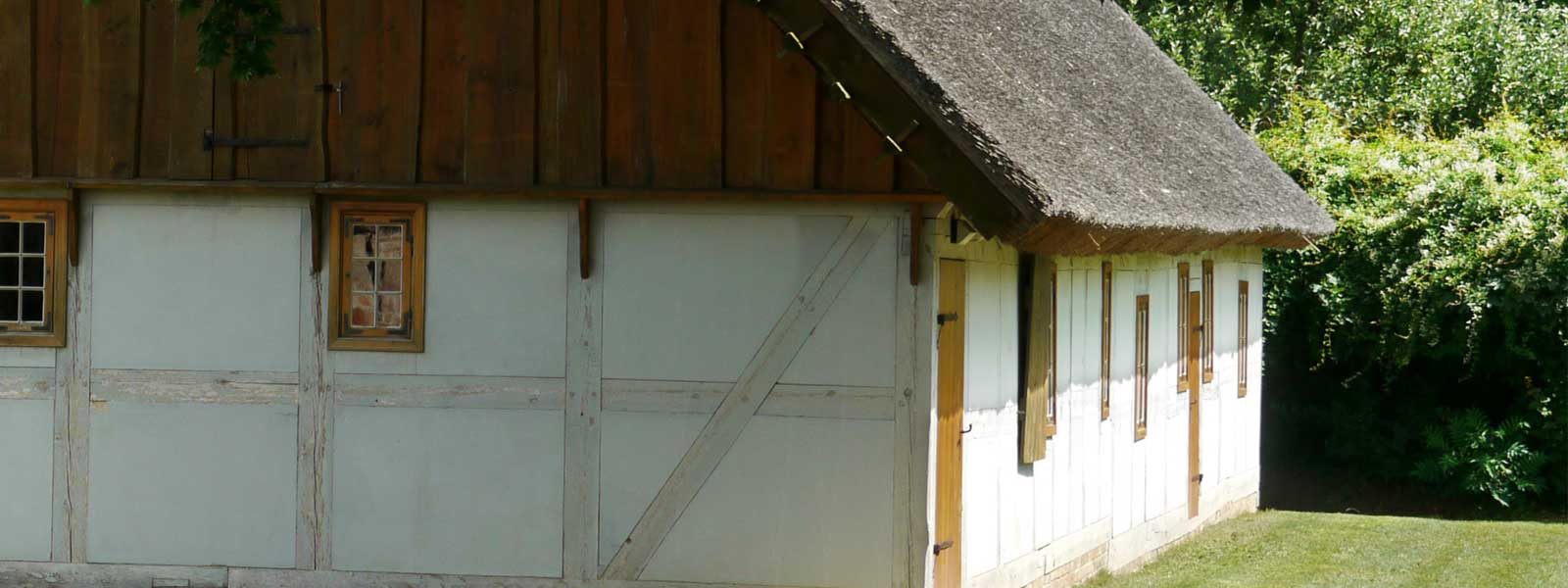
An old farm worker's cottage as a place for education, meeting and history
The so-called Fischerhaus, probably built in 1720, is the second oldest building in the village and was once actually the site of the Altranfter fisherman. Even today, the thatched roof stands for this time. In the house, an installation of old fishing nets by Antje Scholz recalls the history of the Oderbruch as a landscape on the water, which is significant for the Oderbruch.
Since the late 18th century, the agricultural workers of the Altranft estate - consequently the poorest villagers - lived here. In the black kitchen of the house, it is still possible to imagine how people once lived and farmed here.
In addition, the Fischerhaus is used for our workshop offers of landscape education. The Altranft children use the grounds as a playground. Next year we will complete the tour with an old schoolroom.
When the museum's program days are held at the Fishermen's House, the wood-burning oven is also fired up here and fresh sheet cake is served with coffee.
The old village school and today's rural school - an installation in two rooms
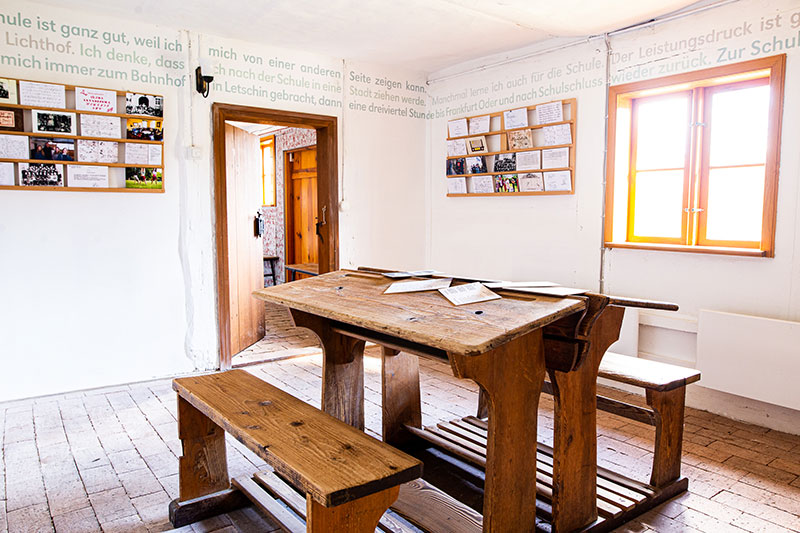
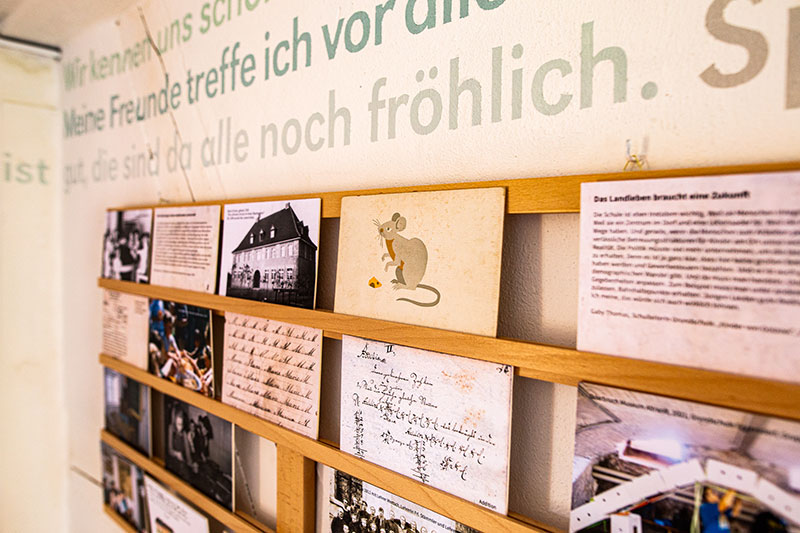
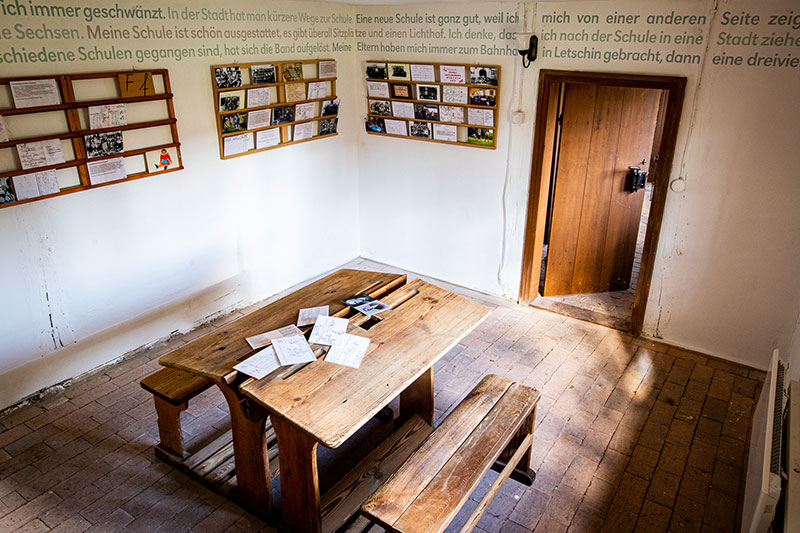
Many open-air museums have old village schoolrooms - and the open-air museum in Altranft also had such an exhibition. However, as the original Altranft school buildings are no longer available, we have chosen a different approach in two rooms of the Fischerhaus.
The first "school room" contains historical displays for learn-to-write cards, in which we have compiled a wealth of information about Altranft's village schools, about the development of the Prussian school system in general and about the schools in the Oderbruch. A room for reading and browsing.
The second room contains an installation of historical school furniture and utensils from various periods. It not only condenses the experience of the small village school, but also poses questions about what people once learned at school and what they think they should learn in the future.
Fishing nets - an installation by Antje Scholz


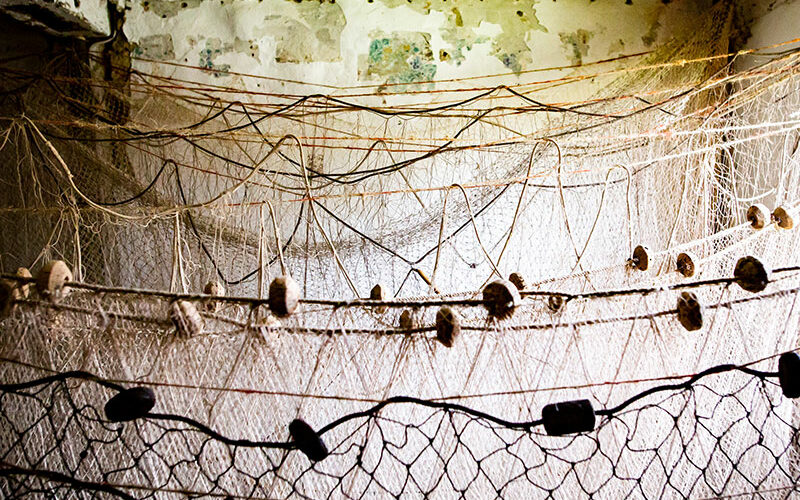
Where the fisherman's house, once known as the "Rohrhaus", stands today, there was once a long shed where the Altranft fisherman hung his nets to dry and repair them. At that time, the Oder still flowed close to the village. Antje Scholz picks up this trail with an installation of old fishing nets - including various instructions on how to knot them.
Room Archive
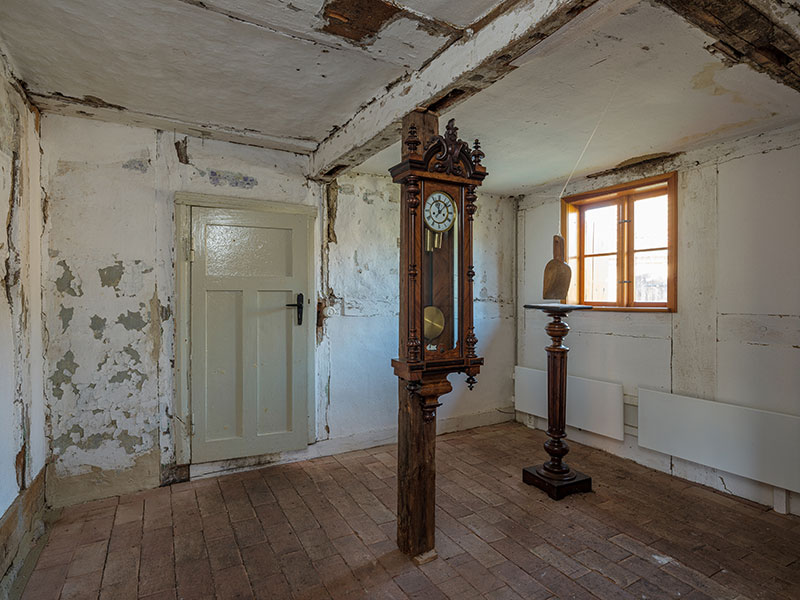
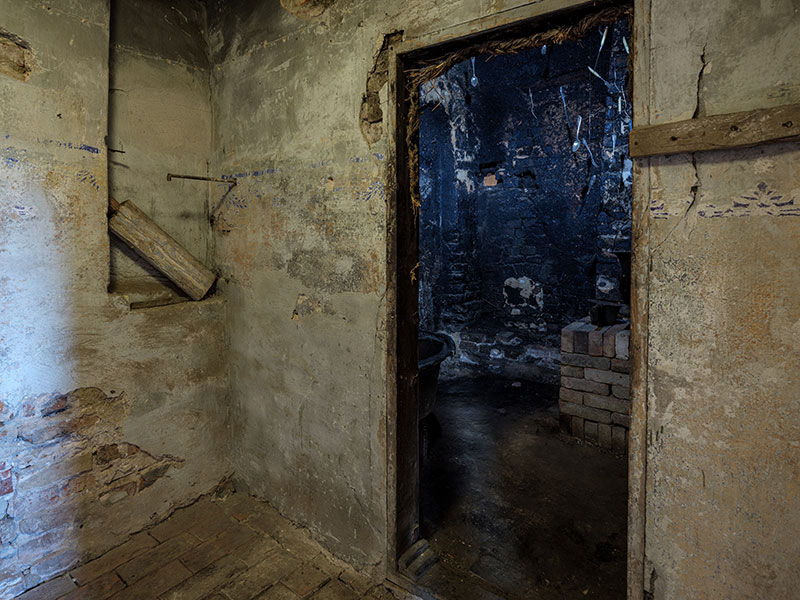

2018 - Zwischenraum - a project by Kerstin Baudis
In 2018, the Oderbruch Museum realized its annual theme of agriculture. In a local project, Kerstin Baudis explored the expressiveness of the museum's own properties and interiors on this theme.
In doing so, she encountered the tension between the stately 19th-century residential interiors in the palace, which are on display here from the Charlotte von Mahlsdorf collection, and the conditions in the Fischerhaus, which, as the first agricultural worker's house in the village of Altranft, always housed the poorest in the village.
In four interventions in the castle, she addressed the various facets of manorial agriculture - from the production of wealth to poverty, flight and the present - and found opportunities for creative counterparts in the fisherman's house. Just as it was visible in the manor house that wealth was sweated out through farm labor, it was now possible to see in the farm worker's house how the silverware escaped through the black kitchen's chimney and what labor time went into a bushel of grain. Kerstin Baudis' work, however, was not primarily about social injustice; above all, it established the connection between the different parts of the museum. The outside was reflected in the inside, the inside was turned inside out. This created the perception of an in-between space.
Kerstin Baudis' work was very valuable for the development of the museum. Not only did she enrich the annual theme with many interesting room installations, she also gave the museum an impulse for further courageous handling of the rooms that had been created during the time of the open-air museum. Respecting their character, but nevertheless introducing one's own questions and uses, has since succeeded in many places.